
Discover the Enchanting Valles Caldera National Preserve
Explore the natural beauty and geological wonders of Valles Caldera National Preserve, a hidden gem in New Mexico offering outdoor activities, wildlife watching, and rich history.
Nestled in the heart of New Mexico, the Valles Caldera National Preserve is a hidden gem waiting to be explored. This massive volcanic caldera, spanning over 89,000 acres, offers a unique blend of natural beauty and geological wonder. Visitors are greeted by expansive meadows, lush forests, and a rich tapestry of wildlife, making it a paradise for nature enthusiasts. The preserve is a haven for outdoor activities. Whether you're an avid hiker, a fishing enthusiast, or someone who loves to explore on horseback, Valles Caldera has something to offer. The trails here range from easy walks to challenging hikes, each providing breathtaking views of the surrounding landscapes. Fishing in the pristine streams and rivers is a favorite pastime, with opportunities to catch trout and other native fish. Wildlife watching is another highlight of Valles Caldera. The preserve is home to elk, black bears, coyotes, and an array of bird species. Early morning or late afternoon are the best times for spotting these creatures in their natural habitat. In winter, the landscape transforms into a snowy wonderland, perfect for cross-country skiing and snowshoeing. Rich in history, Valles Caldera also offers a glimpse into the past with its archaeological sites and remnants of old settlements. The area's history stretches back thousands of years, with evidence of human habitation dating back to ancient Native American tribes. Today, visitors can learn about the cultural significance of the region through guided tours and interpretive programs.
Local tips in Valles Caldera National Preserve
- Visit early in the morning or late in the afternoon for the best wildlife viewing opportunities.
- Bring layers of clothing; temperatures can vary greatly throughout the day.
- Check for any required permits or reservations before planning your visit, especially for fishing and guided tours.
- Don't forget your camera— the panoramic views and wildlife sightings are picture-perfect.
- Carry plenty of water and snacks; facilities within the preserve are limited.
Discover the Enchanting Valles Caldera National Preserve
Nestled in the heart of New Mexico, the Valles Caldera National Preserve is a hidden gem waiting to be explored. This massive volcanic caldera, spanning over 89,000 acres, offers a unique blend of natural beauty and geological wonder. Visitors are greeted by expansive meadows, lush forests, and a rich tapestry of wildlife, making it a paradise for nature enthusiasts. The preserve is a haven for outdoor activities. Whether you're an avid hiker, a fishing enthusiast, or someone who loves to explore on horseback, Valles Caldera has something to offer. The trails here range from easy walks to challenging hikes, each providing breathtaking views of the surrounding landscapes. Fishing in the pristine streams and rivers is a favorite pastime, with opportunities to catch trout and other native fish. Wildlife watching is another highlight of Valles Caldera. The preserve is home to elk, black bears, coyotes, and an array of bird species. Early morning or late afternoon are the best times for spotting these creatures in their natural habitat. In winter, the landscape transforms into a snowy wonderland, perfect for cross-country skiing and snowshoeing. Rich in history, Valles Caldera also offers a glimpse into the past with its archaeological sites and remnants of old settlements. The area's history stretches back thousands of years, with evidence of human habitation dating back to ancient Native American tribes. Today, visitors can learn about the cultural significance of the region through guided tours and interpretive programs.
When is the best time to go to Valles Caldera National Preserve?
Iconic landmarks you can’t miss
Jemez Soda Dam
Discover the enchanting Soda Dam in Jemez Springs, a vibrant natural wonder showcasing stunning mineral formations in New Mexico's breathtaking landscape.

Battleship Rock
Discover the breathtaking beauty of Battleship Rock, a top hiking destination in Jemez Springs, New Mexico, known for its stunning rock formations and serene landscapes.

Valles Caldera Visitor Center
Explore the Valles Caldera Visitor Center, your gateway to New Mexico's stunning landscapes and rich geological history.

Valles Caldera
Explore the breathtaking Valles Caldera in New Mexico, a natural wonder offering stunning landscapes, diverse wildlife, and unforgettable outdoor adventures.

Cerro Grande Route
Discover the natural beauty of the Cerro Grande Route, a premier hiking area in Jemez Springs, NM, perfect for outdoor adventures and breathtaking views.

Unmissable attractions to see
Bandelier National Monument
Explore the ancient cliff dwellings and stunning landscapes of Bandelier National Monument, a unique blend of history and natural beauty in New Mexico.

Fenton Lake State Park
Explore the natural beauty and outdoor adventures at Fenton Lake State Park in New Mexico, a haven for nature lovers and outdoor enthusiasts.

Walatowa Visitor Center
Discover the rich heritage of the Jemez Pueblo at the Walatowa Visitor Center, your gateway to culture, history, and breathtaking landscapes.

Ghost Ranch
Experience the natural beauty and rich history of Ghost Ranch in Abiquiu, NM, a stunning retreat for art lovers, families, and outdoor enthusiasts alike.

Ghost Ranch Education & Retreat Center
Experience the artistic heritage and breathtaking landscapes at Ghost Ranch Education & Retreat Center in New Mexico's enchanting Abiquiu.

The O'Keeffe: Welcome Center
Explore the life and legacy of Georgia O'Keeffe at The O'Keeffe: Welcome Center in scenic Abiquiu, New Mexico.
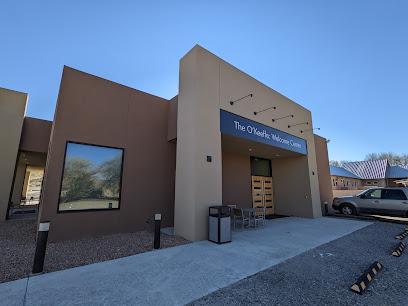
Poeh Cultural Center & Museum
Explore the rich traditions and contemporary art of the Pueblo peoples at the Poeh Cultural Center & Museum in Santa Fe, New Mexico.

Plaza Blanca
Experience the breathtaking beauty of Plaza Blanca, a scenic hiking area in Abiquiu, New Mexico, renowned for its striking white rock formations and stunning landscapes.

Jemez Falls Picnic Site
Escape to Jemez Falls Picnic Site: A serene picnic ground surrounded by nature's beauty in the Jemez Mountains of New Mexico.

Purple Adobe Lavender Farm
Experience tranquility and beauty at Purple Adobe Lavender Farm in Abiquiu, New Mexico, where fragrant lavender fields await your exploration.

McCauley Warm Springs
Experience the natural beauty and rejuvenating waters of McCauley Warm Springs in Jemez Springs, a tranquil escape in the heart of New Mexico's national forest.

TeaKettle Rock, Coyote Ranger District, Santa Fe National Forest
Explore the captivating TeaKettle Rock in Santa Fe National Forest, a serene destination for hiking, photography, and nature appreciation.

Natural Arch
Experience the breathtaking Natural Arch in Los Alamos, NM, a stunning geological wonder surrounded by scenic hiking trails and natural beauty.

Jemez National Recreation Area
Explore the breathtaking landscapes, rich cultural heritage, and outdoor adventures of Jemez National Recreation Area in New Mexico.

Walatowa Slot Canyon
Explore the breathtaking Walatowa Slot Canyon in Jemez Pueblo, NM - a stunning hiking destination rich in beauty and cultural heritage.

Essential places to dine
El Pinto Restaurant
Experience authentic Southwestern flavors at El Pinto Restaurant in Albuquerque—an unforgettable culinary journey awaits you.

The Pantry
Discover authentic American and Latin American cuisine at The Pantry in Santa Fe – where every meal tells a story.
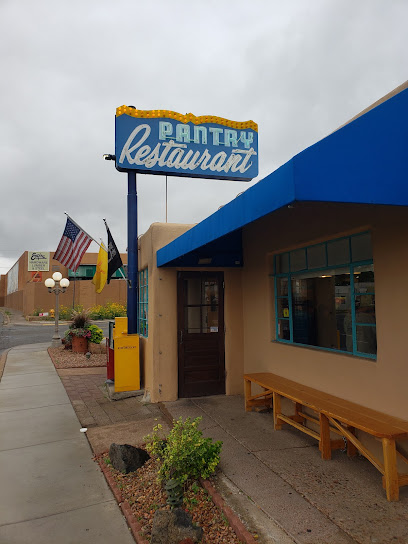
Fogo de Chão Brazilian Steakhouse
Discover an unforgettable Brazilian dining experience at Fogo de Chão Steakhouse in Albuquerque, where tradition meets flavor.

Range Café Bernalillo
Experience authentic Southwestern American cuisine at Range Café Bernalillo, where every bite celebrates New Mexico's culinary heritage.

The Ranch House
Discover authentic American flavors at The Ranch House in Santa Fe – a perfect dining destination for travelers seeking local cuisine.
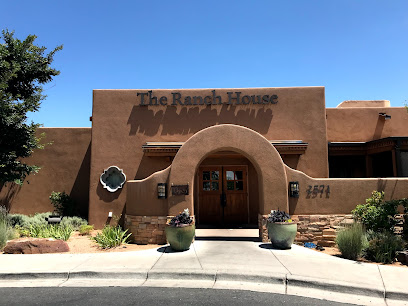
The Shed
Experience authentic Southwestern flavors at The Shed in Santa Fe—where tradition meets taste in every dish.

Los Cerritos Mexican Kitchen
Experience authentic Mexican cuisine at Los Cerritos Mexican Kitchen in Roswell, NM—where every dish bursts with flavor.

Coyote Cafe & Rooftop Cantina
Discover the vibrant flavors of Southwestern cuisine at Coyote Cafe & Rooftop Cantina in Santa Fe – where delicious food meets breathtaking views.

Cafe Pasqual's
Experience authentic Southwestern American cuisine at Cafe Pasqual's in Santa Fe—where every meal tells a story.
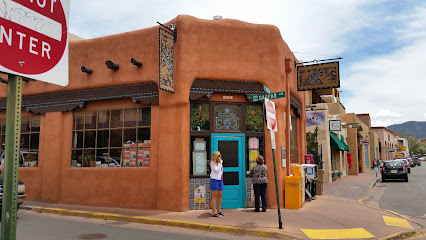
Rancho de Chimayó
Discover authentic Southwestern flavors at Rancho de Chimayó - where tradition meets taste in a charming setting.

Campo at Los Poblanos
Discover culinary excellence at Campo in Los Poblanos: where farm-fresh ingredients meet New Mexican tradition in a charming setting.
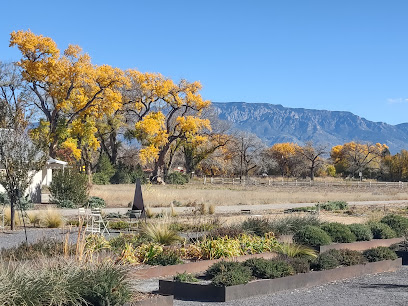
Farley's Food Fun & Pub
Discover the best of American cuisine at Farley's Food Fun & Pub in Roswell - where great food meets vibrant nightlife.

Slapfish
Discover delicious seafood at Slapfish in Albuquerque - where fresh flavors meet sustainable practices for an unforgettable dining experience.

Sopaipilla Factory Restaurant
Discover authentic Mexican cuisine at Sopaipilla Factory Restaurant in Santa Fe, where tradition meets taste in every delicious bite.

Geronimo
Experience culinary excellence at Geronimo in Santa Fe - where New American cuisine meets exceptional service in an enchanting setting.

Markets, malls and hidden boutiques
Bode's General Store
Explore the diverse offerings of Bode's General Store in Abiquiu, NM - your go-to stop for groceries, outdoor gear, local wines, and a cozy café experience.

Valles Caldera National Preserve
Discover the stunning beauty and diverse wildlife of Valles Caldera National Preserve, a must-visit nature preserve in New Mexico for outdoor enthusiasts.

Smith's Marketplace
Explore a vibrant grocery store in Los Alamos offering fresh produce, local delicacies, and a unique shopping experience.

Valles Caldera Visitor Center
Explore the breathtaking Valles Caldera Visitor Center, your gateway to stunning landscapes, educational exhibits, and unique local gifts in New Mexico.

Casa Grande Trading Post
Explore the Casa Grande Trading Post for unique gifts, local history, and geological wonders in the heart of New Mexico.
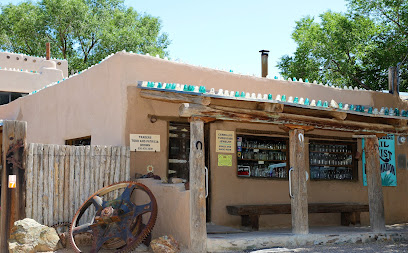
Camino Real Imports Santa Fe
Explore the artistic spirit of New Mexico at Camino Real Imports Santa Fe, where unique gifts, pottery, and furniture await.

Central Shopping Center
Explore the Central Shopping Center in Los Alamos for a unique blend of shopping, dining, and community events.

Travel Bug Specialty Book Store, Coffee Shop and Taproom
Discover the best of Santa Fe at Travel Bug Specialty Book Store, Coffee Shop, and Taproom - a unique blend of books, coffee, and craft brews.

Valles Caldera
Discover the breathtaking beauty and outdoor adventures awaiting you at Valles Caldera in New Mexico's stunning landscapes.

Gift & Gourmet
Explore a treasure trove of unique gifts and gourmet delights at Gift & Gourmet in Santa Fe, NM - a must-visit for every traveler.

Smith's
Discover Smith's in White Rock, NM: a grocery store that offers fresh local produce, artisanal goods, and a taste of New Mexico's culinary richness.

The Chile Shop
Explore The Chile Shop in Santa Fe for unique gifts and gourmet delights that embody the spirit of New Mexico's vibrant culture.

Original Trading Post
Explore the authentic Native American crafts and art at Original Trading Post in Santa Fe, NM, where tradition meets creativity.

Los Alamos Cooperative Market
Experience the best of local flavors at Los Alamos Cooperative Market, your go-to grocery store for fresh produce, health foods, and artisanal goods.

El Nicho
Discover unique handcrafted gifts and local art at El Nicho, a charming gift shop in the heart of Santa Fe, New Mexico.

Essential bars & hidden hideouts
Coyote Cafe & Rooftop Cantina
Experience the flavors of Santa Fe at Coyote Cafe & Rooftop Cantina, where Southwestern cuisine meets a stunning rooftop view.

BOXCAR
Discover the vibrant tastes and lively atmosphere at Boxcar, Santa Fe's premier sports bar and gastropub, where food, fun, and music come together.

The Mine Shaft Tavern & Cantina
Discover the charm of New Mexico at The Mine Shaft Tavern & Cantina, where delicious grill cuisine meets a vibrant atmosphere and local entertainment.

Turtle Mountain Brewing Company
Experience the best of local craft beer and delicious cuisine at Turtle Mountain Brewing Company in Rio Rancho, New Mexico.

Sister
Discover Sister Bar: A lively blend of craft drinks, live music, and arcade fun in the heart of Albuquerque, New Mexico.

Valles Caldera National Preserve
Explore the breathtaking landscapes and diverse wildlife of Valles Caldera National Preserve in New Mexico's Jemez Mountains.

Los Ojos Restaurant & Saloon
Experience the vibrant spirit of New Mexico at Los Ojos Restaurant & Saloon, where delicious grill dishes meet rustic charm in Jemez Springs.

Pajarito Brewpub and Grill
Experience the unique flavors of Los Alamos at Pajarito Brewpub and Grill, where craft beer meets delicious American cuisine.

Turtle Mountain North
Experience the vibrant craft beer scene at Turtle Mountain North, a brewpub in Rio Rancho, NM known for delicious brews and local flavors.

Jemez Soda Dam
Experience the breathtaking beauty of Jemez Soda Dam, a unique natural attraction in New Mexico known for its vibrant mineral springs and stunning rock formations.

Lazy Lizard Grill
Discover the culinary delights of Lazy Lizard Grill in Sandia Park, where flavorful grilled dishes meet scenic mountain views.

The Matador
Experience the lively atmosphere at The Matador, a vibrant bar in Santa Fe, offering an extensive drink menu and live music for all to enjoy.

Las Conchas Trailhead
Discover the natural beauty and diverse hiking experiences at Las Conchas Trailhead in Jemez Springs, New Mexico.

Evangelo's
Discover Evangelo's in Santa Fe, a lively cocktail lounge offering handcrafted drinks and a vibrant atmosphere perfect for unwinding after exploring the city.

Valles Caldera Visitor Center
Explore the breathtaking Valles Caldera Visitor Center, your gateway to rich biodiversity and stunning landscapes in New Mexico's natural wonder.

Local Phrases about Valles Caldera National Preserve
-
- HelloHola
[oh-lah] - GoodbyeAdiós
[ah-dee-ohs] - YesSí
[see] - NoNo
[noh] - Please/You're welcomePor favor/De nada
[por fah-vor/deh nah-dah] - Thank youGracias
[grah-see-ahs] - Excuse me/SorryPerdón/Lo siento
[pair-dohn/loh see-ehn-toh] - How are you?¿Cómo estás?
[koh-moh ehs-tahs] - Fine. And you?Bien. ¿Y tú?
[byen. ee too] - Do you speak English?¿Hablas inglés?
[ah-blahs een-glehs] - I don't understandNo entiendo
[noh ehn-tee-ehn-doh]
- HelloHola
-
- I'd like to see the menu, pleaseMe gustaría ver el menú, por favor
[meh goo-stah-ree-ah vehr ehl meh-noo, poor fah-vor] - I don't eat meatNo como carne
[noh koh-moh kahr-neh] - Cheers!¡Salud!
[sah-lood] - I would like to pay, pleaseMe gustaría pagar, por favor
[meh goo-stah-ree-ah pah-gahr, poor fah-vor]
- I'd like to see the menu, pleaseMe gustaría ver el menú, por favor
-
- Help!¡Ayuda!
[ah-yoo-dah] - Go away!¡Vete!
[veh-teh] - Call the Police!¡Llama a la Policía!
[yah-mah ah lah poh-lee-see-ah] - Call a doctor!¡Llama a un doctor!
[yah-mah ah oon dohk-tohr] - I'm lostEstoy perdido
[ehs-toy pair-dee-doh] - I'm illEstoy enfermo
[ehs-toy ehn-fehr-moh]
- Help!¡Ayuda!
-
- I'd like to buy...Me gustaría comprar...
[meh goo-stah-ree-ah kohm-prahr] - I'm just lookingSolo estoy mirando
[soh-loh ehs-toy mee-rahn-doh] - How much is it?¿Cuánto cuesta?
[kwan-toh kwehs-tah] - That's too expensiveEsto es demasiado caro
[ehs-toh ehs deh-mah-syah-doh kah-roh] - Can you lower the price?¿Puedes bajar el precio?
[pweh-dehs bah-hahr ehl pree-syoh]
- I'd like to buy...Me gustaría comprar...
-
- What time is it?¿Qué hora es?
[keh oh-rah ehs] - It's one o'clockEs la una en punto
[ehs lah oo-nah ehn poon-toh] - Half past (10)Las diez y media
[lahs dyehs ee meh-dee-ah] - MorningMañana
[mah-nyah-nah] - AfternoonTarde
[tahr-deh] - EveningNoche
[noh-cheh] - YesterdayAyer
[ah-yehr] - TodayHoy
[oy] - TomorrowMañana
[mah-nyah-nah] - 1Uno
[oo-noh] - 2Dos
[dohs] - 3Tres
[trehs] - 4Cuatro
[kwah-troh] - 5Cinco
[seen-koh] - 6Seis
[says] - 7Siete
[see-eh-teh] - 8Ocho
[oh-choh] - 9Nueve
[nweh-veh] - 10Diez
[dyehs]
- What time is it?¿Qué hora es?
-
- Where's a/the...?¿Dónde está...?
[dohn-deh ehs-tah] - What's the address?¿Cuál es la dirección?
[kwahl ehs lah dee-rehk-syohn] - Can you show me (on the map)?¿Puedes mostrarme (en el mapa)?
[pweh-dehs mohs-trahr-meh (ehn ehl mah-pah)] - When's the next (bus)?¿Cuándo es el próximo (autobús)?
[kwan-doh ehs ehl prohk-see-moh (ow-toh-boos)] - A ticket (to ....)Un boleto (a ...)
[oon boh-leh-toh (ah)]
- Where's a/the...?¿Dónde está...?
History of Valles Caldera National Preserve
-
Around 1.25 million years ago, a massive volcanic eruption created the Valles Caldera. This eruption, one of the largest in North American history, spewed ash and lava over a vast area, leading to the collapse of the volcanic structure and the formation of the caldera, a large crater-like depression. The Valles Caldera is one of the best-preserved examples of a volcanic caldera in the world.
-
Evidence suggests that human activity in the Valles Caldera dates back over 11,000 years. The area's earliest inhabitants were likely hunter-gatherers who utilized the abundant natural resources. Archaeological sites within the preserve have revealed tools, pottery, and other artifacts that provide insight into these early cultures.
-
The Valles Caldera was an important area for the Ancestral Puebloans, who are known for their complex societies and impressive architectural achievements. Between 1150 and 1550 AD, these people constructed and inhabited large, multi-room stone structures. The caldera's rich resources, including obsidian for tool-making and abundant wildlife, made it a valuable location for the Puebloans.
-
In the late 16th century, Spanish explorers and settlers arrived in the region. They named the area 'Valles Caldera' because of its valley-like appearance. The Spanish influence brought changes to the indigenous cultures, including the introduction of new livestock, crops, and trade goods. The caldera was also used for grazing sheep and cattle, an activity that continued for centuries.
-
During the 19th and early 20th centuries, the Valles Caldera was a prominent site for homesteading and ranching. Settlers established homesteads and ranches within the caldera, taking advantage of its fertile land and water sources. The Baca Ranch, one of the largest historical ranches in the area, played a significant role in the local economy and culture.
-
The unique geological features and diverse ecosystems of the Valles Caldera have long attracted scientists and conservationists. In the mid-20th century, the area became a focus for geological and ecological research. Efforts to preserve the caldera's natural beauty and ecological integrity eventually led to its designation as a national preserve in 2000. Today, ongoing research and conservation efforts aim to protect and understand this remarkable landscape.
-
In 2000, the U.S. government established the Valles Caldera National Preserve to protect the unique geological, ecological, and cultural heritage of the area. Managed by the National Park Service, the preserve covers approximately 89,000 acres and offers numerous recreational opportunities, including hiking, fishing, and wildlife viewing. The establishment of the preserve marked a new chapter in the history of the Valles Caldera, ensuring its protection for future generations.
Valles Caldera National Preserve Essentials
-
Valles Caldera National Preserve is located in northern New Mexico, approximately 75 miles northwest of Albuquerque and 45 miles west of Santa Fe. The nearest major airport is Albuquerque International Sunport (ABQ). From Albuquerque, you can rent a car and drive to the preserve, which takes about 1.5 to 2 hours. Alternatively, you can drive from Santa Fe, which takes around 1 to 1.5 hours. There are no direct public transportation options to the preserve, so renting a car is the most convenient way to reach Valles Caldera.
-
Once inside Valles Caldera National Preserve, transportation options are limited. The best way to explore the preserve is by car or on foot. There are several parking areas within the preserve, and many of the trails and points of interest are accessible from these parking spots. During the summer months, the preserve offers limited shuttle services to some of the more remote areas. Bicycles and horses are also permitted on designated trails. Make sure to check the preserve's website for any updates on transportation services.
-
The official currency in the United States is the US Dollar (USD). Credit and debit cards are widely accepted at the visitor center and some of the local businesses in the surrounding areas. However, it is advisable to carry some cash for entrance fees, parking, and purchases at smaller establishments. ATMs are available in the nearby towns of Los Alamos and Jemez Springs, but it is wise to withdraw sufficient cash before entering the preserve.
-
Valles Caldera National Preserve is generally a safe destination for tourists. However, it is important to take standard precautions. The preserve is a remote wilderness area, so always inform someone of your plans and expected return time. Stay on designated trails and be aware of wildlife, including bears and mountain lions. There are no specific high-crime areas targeting tourists within the preserve, but it is always best to stay vigilant and aware of your surroundings.
-
In case of an emergency, dial 911 for immediate assistance. The preserve has limited cell phone coverage, so it is advisable to carry a satellite phone or a personal locator beacon (PLB) if you plan to venture into remote areas. The visitor center can provide information on the nearest medical facilities, which are located in Los Alamos and Jemez Springs. It is recommended to have travel insurance that covers medical emergencies and outdoor activities.
-
Fashion: Do wear comfortable, weather-appropriate clothing and sturdy hiking boots. Don't wear open-toed shoes or flip-flops, as the terrain can be rugged. Religion: Do respect any cultural or religious sites you may encounter. Public Transport: As there is no public transport within the preserve, this section is not applicable. Greetings: Do greet park rangers and fellow hikers with a friendly nod or hello. Eating & Drinking: Do pack out all trash and food waste. Don't feed the wildlife, as it can be harmful to both animals and humans.
-
To experience Valles Caldera like a local, consider visiting during the less crowded shoulder seasons of spring and fall. Take advantage of ranger-led programs to learn more about the area's geology, wildlife, and history. Bring binoculars for birdwatching, as the preserve is home to a variety of bird species. Don't miss the opportunity to soak in the natural hot springs in nearby Jemez Springs after a long day of hiking. Finally, be sure to check the preserve's website for any updates on trail conditions, weather, and special events.
Nearby Cities to Valles Caldera National Preserve
-
Things To Do in Santa Fe
-
Things To Do in Sante Fe
-
Things To Do in Bernalillo
-
Things To Do in Albuquerque
-
Things To Do in Taos
-
Things To Do in Las Vegas
-
Things To Do in Pagosa Springs
-
Things To Do in Farmington
-
Things To Do in Alamosa
-
Things To Do in Durango
-
Things To Do in Gallup
-
Things To Do in Socorro
-
Things To Do in Trinidad
-
Things To Do in Ouray
-
Things To Do in Ruidoso








